House Of Borgia – The Most Infamous Family Of Renaissance Italy
Ellen Lloyd - AncientPages.com - Murder, greed, lust for power, political intrigue, scandals, incest, and corruption are the reasons why the House of Borgia easily became the most infamous family of Renaissance Italy.
The Renaissance was an intriguing period in Europe, and the history of the Borgia family was equally ‘colorful’, and lively. Between the 14th and 17th centuries, Europe experienced a re-birth characterized by stunning intellectual and cultural achievements.
Painting by John Collier, "A glass of wine with Caesar Borgia", from left: Cesare Borgia, Lucrezia, Pope Alexander, and a young man holding an empty glass. The painting represents the popular view of the treacherous nature of the Borgias - the implication being that the young man cannot be sure that the wine is not poisoned. Credit: Public Domain
Great minds like Leonardo da Vinci and Michelangelo provided Europe with magnificent inventions and paintings. Nostradamus began making prophecies and alchemists struggled to discover the elixir of life. The line between philosophy, science, occultism, and theology was thin. Everything was debated, and the Renaissance encouraged new ways of thinking.
To most common people, life didn’t change much though. The Roman Catholic Church became richer and more powerful, but ordinary people had to work hard to survive. Truth to be told, few ordinary people cared about Leonardo da Vinci’s inventions and the masterpieces produced by Michelangelo.
During the Renaissance two, strong and powerful families emerged in Italy. Their legacy has survived to this day. One family was the House of Medici. As Ancient Pages mentioned earlier, the Medici family were bankers at heart, and they are often referred to as Renaissance Godfathers.
The other family was the House of Borgia and their members also rose to power and fame. Both these families played an important role in the history of Italy and other European countries.
The Borgia’s Rise To Power
The Borgia was an Italian-Spanish aristocratic family that originated from Aragon, Spain. In the late fifteenth century, Italy was not a united country as it is today. There were dozens of independent Italian states that varied in size. By the end of the 15th century, five Italian states became truly significant; Venice, Milan, Florence, Naples, and the Papal States.
View of Florence, the birthplace of the Renaissance. Credit: Steve Hersey, Wikipedia, CC BY 2.0
Alfonso de Borgia (1378–1458), who was first a professor of law at the University of Lleida established the family’s influence in Italy. When Alfonso de Borgia was appointed as a diplomat for the Kings of Aragon, he became highly involved in the political world. Being an ambitious man, whose services were valued by the King and the Church, he eventually became a Cardinal. In 1455, when he was 77-year-old, he became Pope Calixtus III, and he reigned as a Pope for three years.
Rodrigo Borgia – Pope Alexander VI And His Many Illegitimate Children
The Borgia family members were ambitious, and they were able to get two of its members elected as Pope. The road to success would have been harder if they hadn’t helped each other. After being elected Pope, Alfonso de Borgia seemed to have forgotten his honesty and made sure his family members were appointed to key Church offices. He used his military nephew, Rodrigo Borgia (1431–1503) as a weapon to bring in more power and wealth.
Rodrigo Borgia was appointed by his uncle Alfonso de Borgia and he became a cardinal of the Roman Catholic church and, later in 1492, Pope Alexander VI.
Before Rodrigo Borgia became a Pope, he used his time to acquire “a vast amount of administrative experience, as well as wealth and influence.”
Andrew Alexander, author of the book The Borgias: Three Faces of Evil, writes that Rodrigo Borgia “showed himself to be intelligent with an appreciation for art and science. He was a gifted speaker. According to the Vatican researcher, Peter de Roo, "was so familiar with Holy Writ that his speeches were fairly sparkling with well-chosen texts of the Sacred Books.”
He also used his influence to decide the fate of the marriage of King Ferdinand and Queen Isabella, and successfully secured large amounts of land and other possessions, making the Borgia family even richer than before.
Rodrigo Borgia had several illegitimate children. Being a cunning and ambitious man, he used his influence to give his children highly influential positions throughout the Italian political and religious realms. During his reign as Pope Alexander VI, he always struggled to acquire more personal and papal power and wealth, often enriching the Borgia family directly.
Rodrigo made certain that his son Cesare was eventually appointed Cardinal. Cesare also became a powerful military leader and it was thought that he had control over his father. This situation led many people to go to him first instead of approaching his father. Rodrigo’s other son Giovanni was selected as captain-general of the Papal Army.
According to Andrew Alexander, “using his wealth and position, Rodrigo was able to ensure that his nephew Juan became archbishop of Monreale, and his two daughters, Girolama and Isabella were both married to men from prominent Italian families.”
The Borgias’ Favorite Weapon – Disposing Of Their Enemies
The Borgia family became richer and more powerful than ever, but their road to success was dishonest, and they didn’t hesitate to murder those who stood in their way. There was a public side of the Borgias and a private side that was much darker.
If the Borgias were not as successful with their military work, then they simply got rid of those who interfered with their plans. In those days, poisoning was rather common, and many were accused of committing such murders, but offering proof a person was guilty of such a crime was much harder. Readers of Ancient Pages may recall the story of the Sicilian woman Giulia Tofana who poisoned 600 men before being caught.
Lucrezia Borgia And Cesare Borgia – Scandals, Murder And Some More Shocking Events
Lucrezia Borgia (1480-1519), daughter of Pope Alexander VI has been painted in very dark colors, and she has been accused of many crimes and excesses.
As Andrew Alexander writes, “she is primarily remembered as the daughter of a corrupt and scheming pope and the sister of an immoral and murderous brother. Rumors of incest with both her father and her brother have hounded her through the centuries. The birth of a mysterious baby, the death of her second husband and her attendance of the Ballet of Chestnuts have only added to her persona. Add to that the charges of being a poisoner, a serial adulteress and a witch”.
Portrait of Gentleman, Cesare Borgia Duke of Valentinois. Credit: Public Domain
Lucrezia Borgia’s brother, Cesare was certainly not the best Pope. “He was widely believed to have killed his brother Juan, bedded his sister and his sister-in-law. In his efforts to acquire a duchy for himself among the scattered Papal States, numerous men who either stood in his way or offended him were disposed of, either by Cesare personally or one of his henchmen. He also ordered the killing of his rebellious condottieri captains and his sister's second husband,” Andrew Alexander writes.
How much of this is true is uncertain, but there is evidence Cesare did “order the execution of his disloyal captains and the murder of Alfonso d’Aragon, Lucrezia’s second husband.”
As Andrew Alexander explains, “the Borgias popes, especially Alexander, stripped Italian families of their lands, titles and wealth. They turned to foreign powers, Aragon and then France for assistance, thus disrupting the delicate balance of power within Italy.”
Such actions and outcomes could also be the reason why the House of Borgia has been portrayed in dark colors and given a bad reputation.
Of course, one mustn’t forget that Italy was filled with rumors, and today it can be difficult to separate real events from myths, but there is an old saying - there isn't smoke without fire.
Updated on May 8, 2022
Written by Ellen Lloyd – AncientPages.com
Copyright © AncientPages.com All rights reserved. This material may not be published, broadcast, rewritten or redistributed in whole or part without the express written permission of AncientPages.com
Expand for referencesMore From Ancient Pages
-
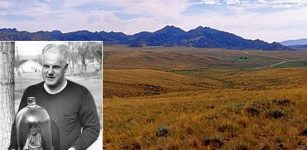 America’s Mysterious Pedro Mountain Mummy And The Hidden Race Of Little People
Featured Stories | Jul 3, 2014
America’s Mysterious Pedro Mountain Mummy And The Hidden Race Of Little People
Featured Stories | Jul 3, 2014 -
 Spartacus: The Rise And Fall Of An Unlikely Hero
Featured Stories | Oct 4, 2022
Spartacus: The Rise And Fall Of An Unlikely Hero
Featured Stories | Oct 4, 2022 -
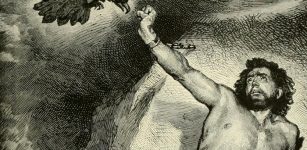 Prometheus ‘Fire Bringer’ – Hero Stealing Fire From Gods Giving It To Mortals
Featured Stories | Sep 5, 2018
Prometheus ‘Fire Bringer’ – Hero Stealing Fire From Gods Giving It To Mortals
Featured Stories | Sep 5, 2018 -
 How The Horseshoe Became A Symbol Of Good Luck
Ancient Idioms & Superstitions | Jan 28, 2017
How The Horseshoe Became A Symbol Of Good Luck
Ancient Idioms & Superstitions | Jan 28, 2017 -
 Unique 17th Century Sunken Swedish ‘Bodekull’ Ship – Identified
Archaeology | Jun 24, 2017
Unique 17th Century Sunken Swedish ‘Bodekull’ Ship – Identified
Archaeology | Jun 24, 2017 -
 Cave Of The Stone Sepulcher – ‘Actun Tunichil Muknal’ And Its Dark History
Featured Stories | Mar 22, 2019
Cave Of The Stone Sepulcher – ‘Actun Tunichil Muknal’ And Its Dark History
Featured Stories | Mar 22, 2019 -
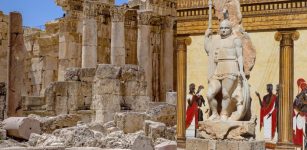 Did Lead Pollution Cause IQ Declines Among Ancient Romans?
Places | Jan 8, 2025
Did Lead Pollution Cause IQ Declines Among Ancient Romans?
Places | Jan 8, 2025 -
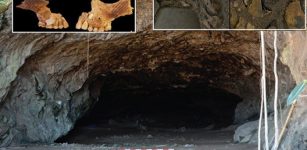 Unique 8,000 Year-Old Child Burial Reveals Its Secrets
Archaeology | Nov 3, 2020
Unique 8,000 Year-Old Child Burial Reveals Its Secrets
Archaeology | Nov 3, 2020 -
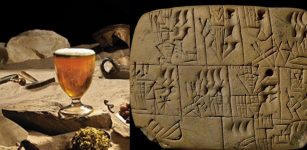 World’s Oldest Paycheck Reveals Ancient Sumerian Workers Were Paid In Beer
Ancient History Facts | Nov 22, 2018
World’s Oldest Paycheck Reveals Ancient Sumerian Workers Were Paid In Beer
Ancient History Facts | Nov 22, 2018 -
 Mysterious Undeciphered Ripley Scroll And Its Connection To The Philosopher’s Stone
Featured Stories | Mar 26, 2025
Mysterious Undeciphered Ripley Scroll And Its Connection To The Philosopher’s Stone
Featured Stories | Mar 26, 2025 -
 The Untold Story Of The Great Sphinx – Puzzling Discoveries – Part 2
Ancient Mysteries | Aug 13, 2019
The Untold Story Of The Great Sphinx – Puzzling Discoveries – Part 2
Ancient Mysteries | Aug 13, 2019 -
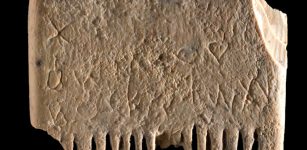 Breakthrough – First Sentence Ever Written In Canaanite Language Discovered – What Does It Say?
Archaeology | Nov 9, 2022
Breakthrough – First Sentence Ever Written In Canaanite Language Discovered – What Does It Say?
Archaeology | Nov 9, 2022 -
 Cupbearer Was Privy To Conversations And Political Secrets Hidden Behind Closed Doors
History | Feb 3, 2025
Cupbearer Was Privy To Conversations And Political Secrets Hidden Behind Closed Doors
History | Feb 3, 2025 -
 Mysterious Ancient Circular Structure Discovered In Turkey – Has Zippalanda, The Lost City Of The Hittites Been Found?
Archaeology | Dec 27, 2022
Mysterious Ancient Circular Structure Discovered In Turkey – Has Zippalanda, The Lost City Of The Hittites Been Found?
Archaeology | Dec 27, 2022 -
 Livestock And Dairying Led To Dramatic Social Changes In Ancient Mongolia – New Study
Archaeology | May 11, 2022
Livestock And Dairying Led To Dramatic Social Changes In Ancient Mongolia – New Study
Archaeology | May 11, 2022 -
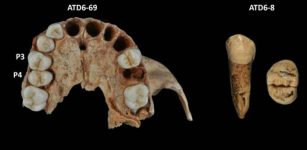 Neanderthals Are Not The Only Species Whose Dentition Is Characterized By The Possession Of Thin Enamel
Archaeology | Jan 19, 2023
Neanderthals Are Not The Only Species Whose Dentition Is Characterized By The Possession Of Thin Enamel
Archaeology | Jan 19, 2023 -
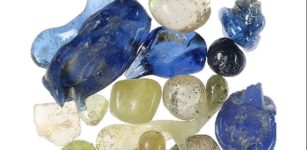 Traditional Viking-Age Crafts: Glass Beadmakers And Their Secrets
Archaeology | Oct 4, 2022
Traditional Viking-Age Crafts: Glass Beadmakers And Their Secrets
Archaeology | Oct 4, 2022 -
 Stone Tools In Lapa do Picareiro Cave Reveal Modern Humans Reached Western Parts Of Europe 5,000 Years Earlier Than Previously Thought
Archaeology | Sep 30, 2020
Stone Tools In Lapa do Picareiro Cave Reveal Modern Humans Reached Western Parts Of Europe 5,000 Years Earlier Than Previously Thought
Archaeology | Sep 30, 2020 -
 Surprising Diversity Of Ethnic Groups In The US Virgin Islands Before Columbus – New Study
Archaeology | May 18, 2023
Surprising Diversity Of Ethnic Groups In The US Virgin Islands Before Columbus – New Study
Archaeology | May 18, 2023 -
 Is There An Ancient Anomaly In Our DNA? It Is Possible, Scientists Say
Featured Stories | Mar 6, 2025
Is There An Ancient Anomaly In Our DNA? It Is Possible, Scientists Say
Featured Stories | Mar 6, 2025



